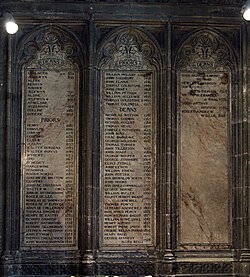
The prior of Christ Church served in Christ Church Cathedral Priory in Canterbury, attached to Canterbury Cathedral.

The prior of Christ Church served in Christ Church Cathedral Priory in Canterbury, attached to Canterbury Cathedral.
Canterbury Cathedral began life as cathedral for its city, diocese and archdiocese, headed by the Archbishop of Canterbury and run by a dean. However, when the cathedral was re-formed as a monastic institution (known as Christ Church Priory) as well as a cathedral, a Prior was put in charge of the monastery (with the Archbishop effectively acting as abbot). When in 1539 the monastery was dissolved and reverted to being solely a cathedral, the prior's duties reverted to a dean, the first of whom was Nicholas Wotton. [1]